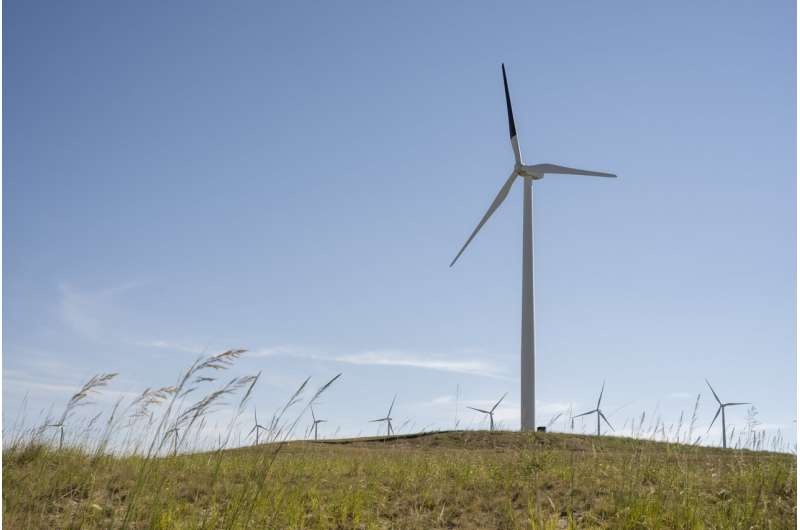Researchers at Oregon State University are exploring an innovative approach to mitigate the impact of wind turbines on birds and bats. By painting a single blade of the turbine black, they aim to disrupt the visual uniformity of the airspace and prompt avoidance behavior in birds, potentially reducing collision fatalities.

Painting Blades to Save Birds
Investments in wind energy are on the increase as the world heads towards cleaner sources of power. But the changeover has been difficult. Among those concerns is the long-standing issue of bird and bat mortality due to some 300,000 creatures dying each year from crashing into turbine blades.
Scientists at Oregon State University are coordinating a multi-agency, industry, and nonprofit effort that will collect data to determine if painting one blade of a wind turbine black can provide a way to stop the annual slaughter of hundreds of thousands of birds in North America. That’s the premise behind recent research in Norway that found a whopping 72% drop in bird collisions when one blade was painted black. The researchers at Oregon State hope to reproduce and build on these results, validating that it is effective and does not have unintentional and negative consequences.
Analyzing the Impact on Birds and Bats
Painting 28 wind turbine blades blackThe study is underway at a PacifiCorp wind farm northeast of Glenrock, Wyoming. The researchers are now monitoring the effect of the baffles on many bird and bat species, including bald eagles but also other birds and bats.
The theory goes that the black-painted blades would disturb the otherwise uniform appearance of the airspace, resulting in more visible wind turbines and deterring birds from flying into the zone. Behaviors and Biological Processes: This may be particularly powerful for diurnal species, such as eagles and other birds that perceive their environment largely through visual cues. In comparison, bats use auditory signals to detect objects at a distance but also have different vision abilities so that the painted blades may not be detected as well.
The researchers review the influence through a holistic process involving flexible data sources. From the research site, they are studying 8 million recorded bird movements, particularly those of golden eagles—a species that is sometimes influenced by wind turbines. This fine-scale investigation of three-dimensional flight tracks, which has been previously underrepresented in the literature, is hoped to provide insights into how eagles maneuver around turbines and other anthropogenic structures; e.g. roads and power lines. This will, in turn, help us make better conservation strategies for these birds.
At the Wyoming site, the research team is also working with human and detection dog-collected data of bird/bat carcasses. This will be used to estimate the population-level effects of wind energy on ferruginous hawks, a native western North American species.
Conclusion
The results of this study could have important future implications on the wind industry, as well as the broader wildlife conservation perspective. The efforts by researchers, to find out a trade-off between the reliance on clean energy and maintaining our wildlife populations, through innovative ventures like painting turbine blades black, highlights this urgency for urgent action. Results from this study, available in the coming years, will help inform decision-making for wind energy companies and regulatory agencies to develop effective strategies aimed at minimizing bird and bat collisions.
